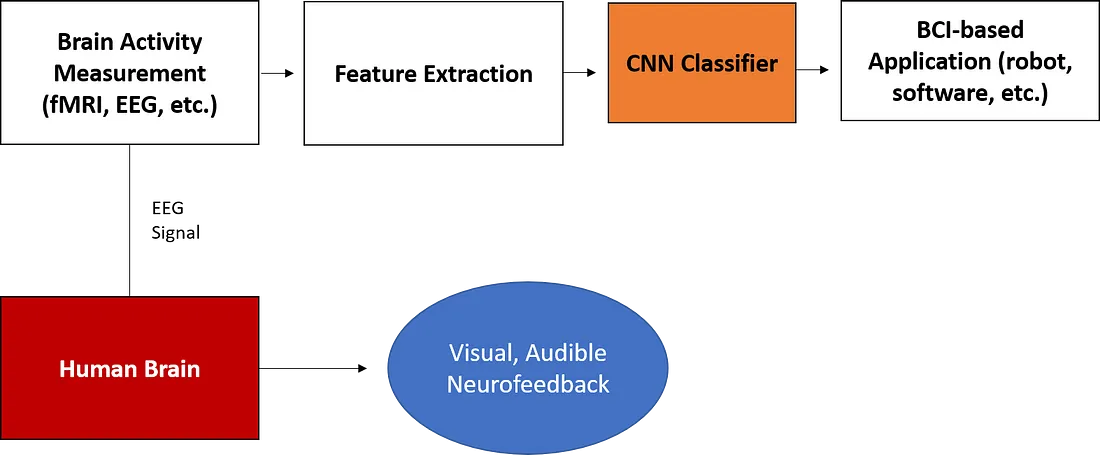A Beginner’s Guide to Brain-Computer Interface and Convolutional Neural Networks
Part-I:The big picture of brain-computer interface and AI + Research papers
Part-II:In-depth explanation of neural networks used with BCI
Definition
Brain-Computer Interface (BCI): devices that enable its users to interact with computers by mean of brain-activity only, this activity being generally measured by ElectroEncephaloGraphy (EEG).
Electroencephalography (EEG): physiological method of choice to record the electrical activity generated by the brain via electrodes placed on the scalp surface.
Functional magnetic resonance imaging (fMRI): measures brain activity by detecting changes associated with blood flow.
Functional Near-Infrared Spectroscopy (fNIRS): the use of near-infrared spectroscopy (NIRS) for the purpose of functional neuroimaging. Using fNIRS, brain activity is measured through hemodynamic responses associated with neuron behaviour.
Convolutional Neural Network (CNN): a type of artificial neural network used in image recognition and processing that is specifically designed to process pixel data.
Visual Cortex: part of the cerebral cortex that receives and processes sensory nerve impulses from the eyes
How Your Brain Works Now, And What’s To Come
大脑分成两部分:
- the limbic system
- the neocortex
其包含约860亿神经元. 当我们思考, 运动时, 就会有相当大的一部分神经元活动. 活动的方式便是电信号, 这些信号可以被分成两种.
- Spikes
- Field potentials
我们能够探测这些信号, 并将它们整合运用到设备上:

但是BCIs的一大问题就是脑信号十分弱且繁复.
对这些信号整合的主要方法就是AI/ML方法.
Signal Production
There are two ways of producing these brain signals:

Signal Detection
EEG测量电活动; fMRI测量血液活动.
以上两种都是非侵入式的.
Signal Processing
去噪-学习探测
Signal Transduction
分离出有效信息后, 使用这些信号连接到PC, 控制相关部件.
Types of BCI
大概可以分为:
- 侵入式: 入脑
- 半侵入式: 入颅, 不突破血脑屏障
- 非侵入式: 头皮